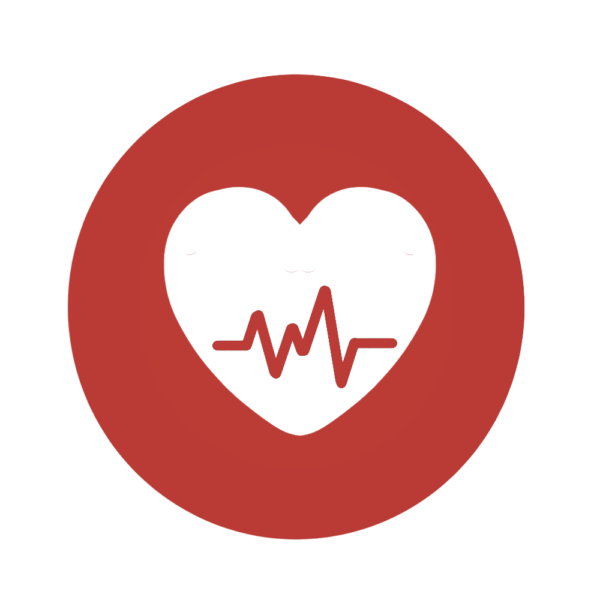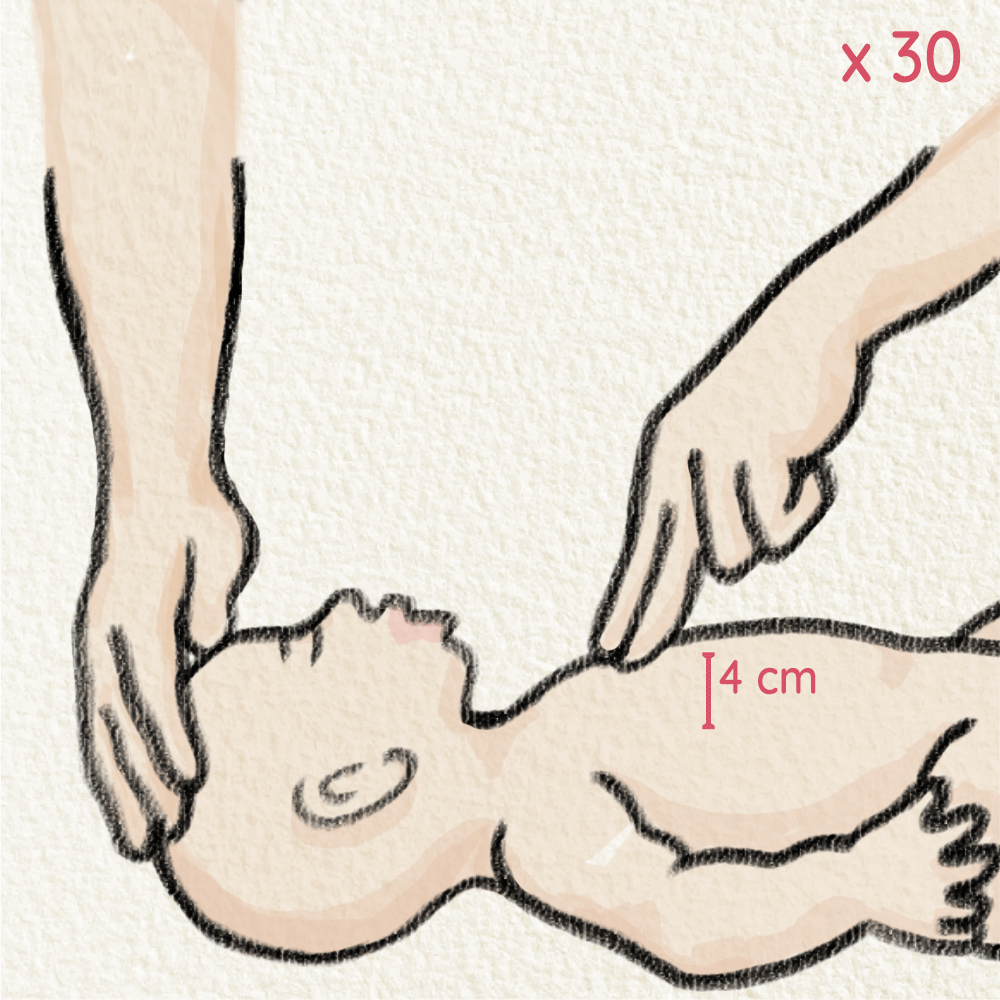CPR for infants
First aid

If you find yourself in a situation where your baby doesn’t show any sign of life, the first thing to do is to call for an ambulance.
Make sure you are safe: Ensure that the place is safe for you and the child, and then, perform CPR.
Check for response: You should assume that cardiac arrest is present if the baby is unresponsive and not breathing or only gasping. To check for response, gently tap the baby and shout the name. If there’s no response, start CPR.
The C-A-B sequences: The three priorities when dealing with an emergency are referred to as C-A-B: Compression-Airway-Breathing.
Compression: Give chest compression to generate blood flow and increase the chance of Return Of Spontaneous Circulation. To do that, place two fingers, or the heel of one or two hands, in the middle of the chest and push down by 4cm (about 1.5 inches), which is approximately one-third of the chest’s total diameter.
Airway: Open the airway using a head tilt-chin lift maneuver. To do that, place one hand on your child’s forehead and gently tilt the head back, lifting the tip of the chin using two fingers. This moves the tongue away from the back of the throat.
Breathing: Give breaths to an infant using a mouth-to-mouth-and-nose technique. To do that, place your mouth over the mouth and nose of the infant and blow steadily and firmly. Make sure the breaths are effective (ie, the chest rises). Each breath should take about 1 second.
Compression-Only CPR: If you or the rescuer are unable to deliver rescue breaths, you should provide only chest compressions.

CPR steps for infants under one year old
- Place the baby on the back on a firm, flat surface.
- Place two fingers in the middle of the chest and push down by 4cm (about 1.5 inches), which is approximately one-third of the chests’ total diameter. The depth of chest compressions is very important. Use the heel of one or two hands if you can’t achieve a depth of 4cm using the tips of two fingers.
- Perform 30 chest compressions at a rate of 2 per second. Count out loud: “One and two and three and four…,” pushing down as you say the number and coming up as you say “and.”
- Perform 2 rescue breaths. To do that, open the infant’s airway by placing one hand on the forehead and gently tilting the head back and lifting the chin. Remove any visible obstructions from the mouth and nose. Then place your mouth over the mouth and nose of the infant and blow steadily and firmly into their mouth, checking that their chest rises. Give two initial rescue breaths. Each breath should take about 1 second.
- Continue the cycle of 30 chest compressions and 2 rescue breaths until your child begins to recover or emergency help arrives.
What if the chest doesn’t rise?
If your child’s chest does not rise, reposition the head, make a better seal, and try again. If it is not effective and the child’s chest still does not rise, the airway could be blocked. If that’s the case, open the baby’s mouth and look for objects to remove. Continue to check the mouth after each set of compressions until the chest rises as you breathe in.
What if the child is bleeding?
Make sure your baby is not bleeding severely; if that’s the case, take the first measures to stop the bleeding by applying pressure to the area.
What exactly is CPR?
CPR stands for cardiopulmonary resuscitation. It is a lifesaving measure you can take to save a child who shows no signs of life. CPR uses chest compressions and rescue breaths to make oxygen-rich blood circulate through the brain and other organs until the child revives or medical help arrives.
Verified:
Dr. Piyawut Kreetapirom, MD. license no. 41578 (2 February 2020)



